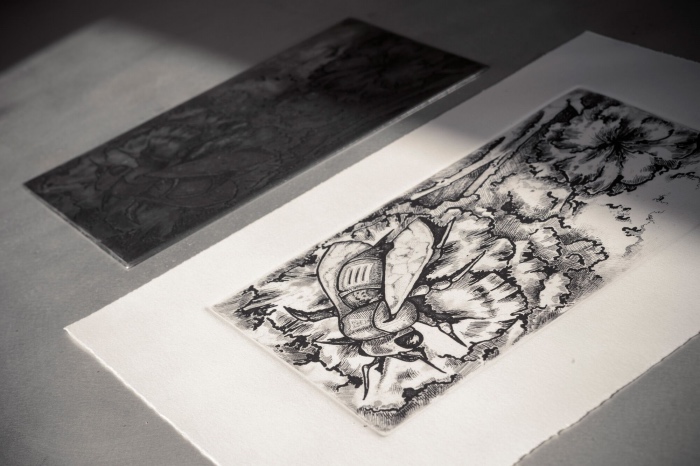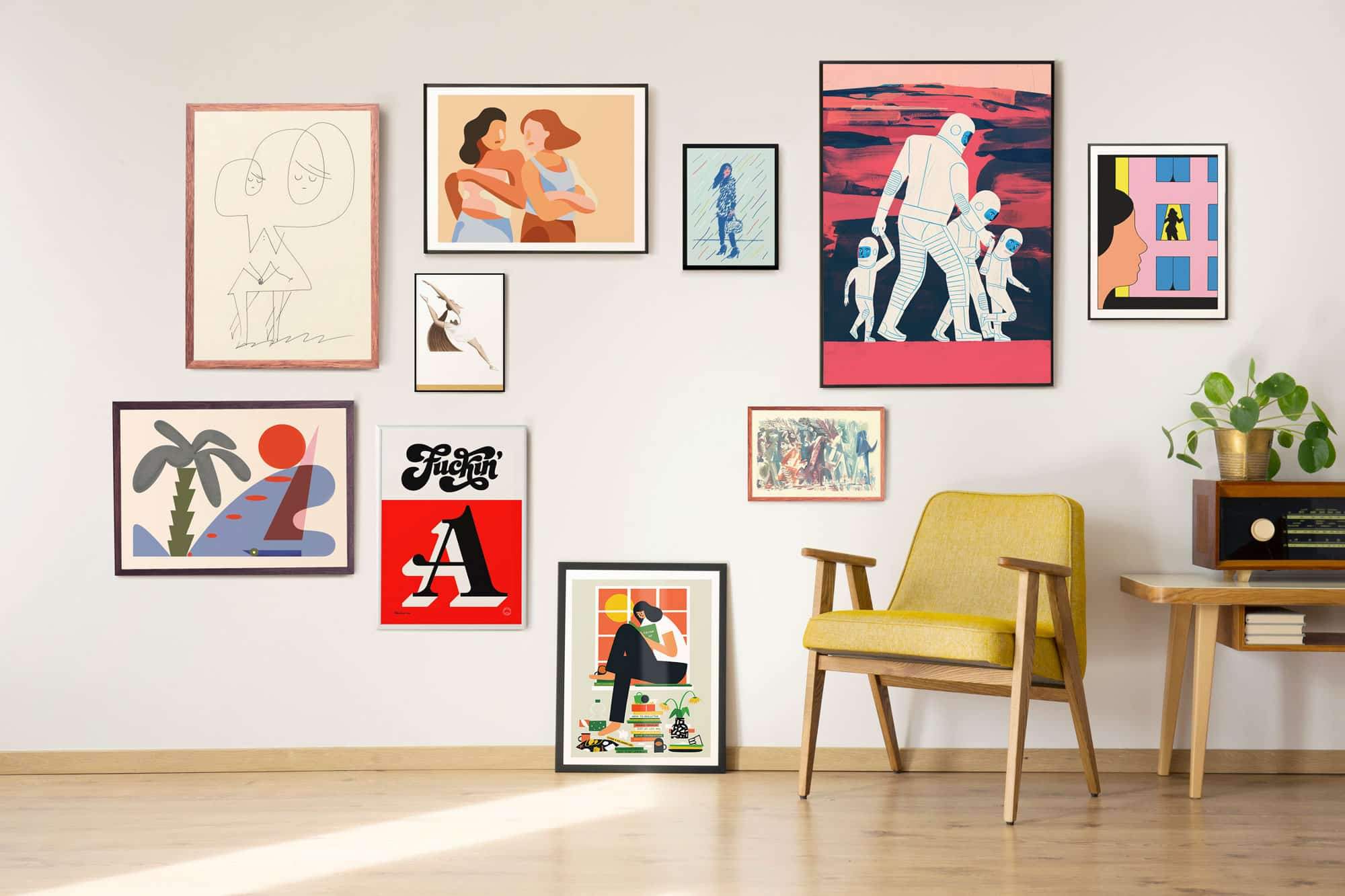Creating art isn’t just a satisfying hobby; it may also turn into a lucrative career. London is a major hub for the printing industry because of its rich cultural diversity in the art world. Those who are unfamiliar with the art market in London may feel intimidated by the prospect of buying and selling prints for the first time.
Which of these best describes you: creator, novice collector, or dealer? Do you need a trustworthy resource to learn everything there is to know about the art printing market?Well, you have landed on the right place then!
Here, we’ll discuss the many forms that art prints can take, how to verify whether or not they are genuine, how to maintain and exhibit them, where to find them for sale, and much more. Sounds intriguing enough?
Well, we will also discuss the legal implications of selling prints, how to work with printers and artists, and other practical matters in detail.
This guide will equip you with the knowledge you need to get started collecting art in London or selling it, regardless of the fact that you’re new to these two activities.
What is Art Printing?
Art printing refers to the process of making several copies of a printed artwork. Art printing is distinct from more conventional methods of artistic expression in several key respects. Replicability of the artwork is a key distinction among art printing and other conventional art media.
The ability to mass-produce identical replicas of works of art via art printing expands the market for and accessibility of these works. Unlike more conventional art forms, where every creation is one-of-a-kind and cannot be duplicated, this may be done repeatedly.
It’s also possible to generate effects and styles in art printing that would be challenging, if not impossible, to do with more conventional mediums.
Art printing also often involves collaboration with a printer or printmaker, who has expertise in the printing process and can help the artist achieve their desired result.
Overall, art prints are now widely available and can be purchased in a range of formats, from signed, limited-edition prints to inexpensive, bulk posters and prints.
There are multiple techniques through which art printing is usually done, such as lithography, etching, engraving, screen printing, etc. Let’s talk about them in brief-

Lithography Art Printing
Lithography is a form of art printing that uses a flat stone or metal plate as the printing surface. This technique of art printing is done by drawing an image onto the surface of a metal plate or stone with a greasy substance like crayon or ink.
Then the stone or the plate is dampened with water so that the ink can adhere only to the drawn areas. The plate is then inked and run through a printing press, as a result, the image is transferred onto paper.This is one way in which the lithography method contributes to the replication of artwork, including well-known paintings.
Etching Art Printing
Etching entails making a picture on a metal plate by first protecting it with acid-resistant varnish or wax, and then etching the uncovered metal.
Next, the artist uses a sharp instrument to sketch an image on the ground, scraping away the wax to reveal the metal below. In order to create the grooves or channels that will contain the ink, the plate is submerged in an acid bath.
The etched plate is then inked and placed on a printing press, which transfers the image to paper. After the acid has etched its design into the plate, the ink is pressed into the resulting grooves and lines to create a raised image.
It is a highly skilled and labor-intensive process, but it can produce highly detailed and nuanced images with a distinctive character and texture.
Engraving Art Printing
Engraving is another form of art printing technique where a design or image is incised onto a metal plate by using a sharp tool named burin. Then the plate is inked and pressed onto paper, thus the inked design is transferred onto the paper.
Engraving allows for a high level of precision and detail, and multiple prints can be made from a single plate. It is a highly skilled and precise art printing technique that has been used by artists for centuries to create a wide range of images and artworks.
Screen Art Printing
Screen printing is one of the most popular techniques of art printing where a mesh screen is used to transfer ink onto a surface. The screen is first prepared by blocking out areas that are not meant to be printed using a stencil or a light-sensitive emulsion.
Then ink is applied to the screen, and a squeegee is used to force the ink through the screen and onto the surface, thus a printed image is created.
Screen printing is a versatile technique that can be used to print on a variety of surfaces, including paper, fabric, and plastic.The technique is popular among artists and designers for its ability to produce large quantities of prints quickly and affordably.
Types of Art Prints
Prints of art come in a variety of styles and mediums, and each has its own unique qualities and market value. You need complete familiarity with them before making any choices. In general, these are the most typical types:
Limited Edition Prints
These are hand-numbered and signed prints created in a small edition size. The print will be more desirable to collectors as a result of this. No additional prints of this edition will be made once they are sold out.
Open Edition Prints
Unlike limited edition prints, open edition prints can be made in an unlimited quantity. They may be made quickly and at little cost, making them a popular alternative to limited edition prints.
Giclee Prints
Prints made with a Giclee printer, which utilises specialist inks and paper to create an archival quality fine art print, are known as high quality digital prints. Giclee prints can be made in either a limited or an open edition, and are generally held in higher value than those made using offset lithography.
Screen prints, etchings, and lithographs are other forms of art prints, each with its own process and qualities.
Factors Affecting the Value
It is essential that every print, no matter the format, be made using high-quality materials and methods to ensure its durability for many years without fading or degrading.
- A limited-edition print’s value is based on the artist’s signature and the quality of the materials used to print it.
- If they are well created, prints from an open edition might command a premium price.
- Giclee prints are highly sought after due to their superior print quality and the artist’s fame.
- While etchings and lithographs are prized for their labor-intensive processes, screen prints are sought for their unique textures and vibrant colours.
Finally, prints are worth what the market will pay depending on their uniqueness, rarity, quality of materials and processes, edition size, and artist’s reputation.
How to Authenticate Art Prints
There are only a few things that need to be taken into account when attempting to verify a print and confirm its worth and origin. Find out more about the print’s creator, the artist, first. Explore the artist’s biography to learn about their distinctive methods and approaches. Discover the print’s edition information, such as its size, date of printing, and printing method.
Secondly, inspect the print for abnormalities with its colour or clarity, wear, or age.
Finally, check for the artist’s signature, edition number, and other marks of legitimacy. If you still have doubts about the print’s legitimacy, it’s best to consult a professional art researcher or assessor.
Last but not least, check the print’s provenance by researching its previous owners and examining any accompanying certificates or documents.
It’s crucial to consider various aspects when buying prints to ensure quality and authenticity. Check out these pointers before you buy any prints:
- The lower the number, the more expensive the limited edition print. Find prints with low edition numbers to maximize their value.
- Find artist-signed prints as it enhances the print’s authenticity. Check the signature against the artist’s.
- Find prints that have been officially certified as genuine by reputed source. This verifies the print’s legitimacy, edition number, and artist signature.
- Look for high-quality prints to make it durable for years.
- Check the print for damage or fading. To preserve the print, store it appropriately.
How to Display and Care for Art Prints
Displaying and caring for art prints preserves their value. Care can preserve the print’s quality and value for years. Some suggestions are as follows:
Frame It
Frames protect prints from light, humidity, and dust. You can preserve art prints by framing them properly and protecting them from environmental influences. To avoid damage, frame the print with acid-free materials.
Prints can also be shielded from light and UV deterioration by using UV-resistant glass. A conservation frame also protects artwork from environmental concerns. Choose archival materials and seal the frame to keep dust out.
Avoid Direct Sunlight
Fading and discolouration might result from direct sunlight. Avoid direct sunlight when displaying the print.
Avoid High Humidity and Temperature
Humidity and temperature variations can warp, buckle, or break the print. Avoid displaying the print near heating or cooling vents or other excessive temperature or humidity changes.
Think of not using glass or acrylic and instead “floating” the print on the mat.The print can breathe and avoid humidity damage. Dehumidifiers and air conditioners also help control room humidity.
Clean and Store the Prints Correctly
To clean the print, use a gentle brush or towel. Don’t use any kind of liquid or cleaning solution on the print. Put the print in an acid-free box and store it somewhere dark and out of direct sunlight while it’s not on display.
Where to Buy Art Prints in London
Before purchasing an art print, it is important to consider its provenance, the quality of its materials, and the artist’s reputation. There are many stores offering prints of various sorts of artwork, and your choice will depend on your own preferences and budget. Buying art prints from one of many different outlets has its benefits and drawbacks.
Online Marketplaces
Prints from various artists and styles are available at competitive costs on online marketplaces. Etsy, Amazon, and Society6 provide a variety of art prints at different prices. Before buying, you can browse styles and artists and read reviews.
| Pros | Cons |
| Varieties of arts by design | Hard to verify authenticity |
| Competitive prices | |
| Option to compare prices | |
| Option to read customer reviews |
What to Look for
Search for sellers who describe the print’s materials, edition size, and provenance. Make sure the merchant has good reviews and ratings.
Galleries
Prints by both well-known and up-and-coming artists are commonly sold in art galleries. Coming into direct contact with the prints and the artists who created them is only possible through a personal gallery visit. Around 54% of adults in London go to galleries at least once on their adulthood.
| Pros | Cons |
| In person observation | Higher prices |
| Option to look for authenticity | Not so dedicated art styles or designs |
| The chosen and best arts |
What to Look for
Find art galleries that feature artists whose work you like and whose aesthetic you find appealing. Inquire as to the origin of the print, the number of copies made, and the medium it was printed on.
Artist Websites
Several artists now sell prints directly through their websites, where customers can benefit from a more personalized interaction and find out more about the artist and the work. Prints of artworks from more than 50,000 artists are on display from 3,400 British art institutions across standard art websites.
What to Look for
Find creators whose work resonates with you and whose aesthetic interests you. Look over the artist’s profile and body of work to get a sense of how they work and what motivates them. Learn as much as you can about the print’s medium and size.
How to Sell Art Prints in London
If you follow the prescribed procedure, selling art prints in London will be quick, painless, and rewarding. Here they are to act as a reference in case you ran into trouble. When setting your prices, you should conduct research on comparable works. Consider materials, print runs, and production costs when you set your prices.
After that, you go on to the marketing phase. Use social media and online exhibitions to promote your works and reach a wider audience. Make an effort to exhibit your work and collaborate with other artists to raise your profile.
Moreover, make sure you have the legal permission to sell reproductions of your artwork. Make sure your ideas are protected by securing licenses and copyrights for your work.
As a last point, remember that building relationships with customers is just as crucial as providing high-quality prints and prompt service.It’s important to take criticism seriously and use it to improve your products and procedures.
Now learn about art sales platforms. Artists should weigh costs, commissions, and client reach when choosing a platform to sell their prints. Artists’ aims, budget, and audience will determine the ideal platform for selling art prints. Here they are-
e-commerce
Artists can sell their prints on Etsy, Redbubble, and Society6 like platforms. These platforms manage inventory, prices, and shipping.
Print-on-demand services
Fine Art America and Art.com offer print-on-demand services for artists. These services print, frame, and ship prints, freeing artists to create.
Galleries
Galleries offer a more personalized shopping experience and selected selection of prints. Galleries can be online or offline and specialize on certain artists or art forms.
How to Commission Custom Art Prints in London
It is possible to have a unique work of art that caters to your demands and preferences by commissioning a custom art print. How to order custom art prints and collaborate with artists and printers:
Plan Your Budget
Determine your budget before commissioning art. This helps you discover a budget-friendly artist and printer.
Discover a Printer and Artist
Find artists in your style and media. Friends, family, and social media can help you find artists. Work with the artist to select a printer who can execute their concept.
Describe Your Artistic Goals
Discussing your creative concept with the artist is crucial when commissioning a print. Choose your colour, composition, and subject preferences. The artist may submit sketches or mockups to assure your satisfaction.
Schedule It
Creating a custom print takes time, so set a deadline with the artist and printer. To keep on track, discuss drawing, proof, and delivery timeframes.
Frame and Display
Consider presentation before ordering prints. Discuss framing options with the artist and printer, and ensure the finished product fits the display position.
Conclusion
Art printing in London can help new collectors and sellers establish a collection of rare and valuable prints. Choose from a wide variety of limited edition prints, open edition prints, and giclee prints to suit your needs and budget. Consider the edition size, artist signature, provenance, and conservation and framing practices to preserve and raise the value of prints.
Print on demand services and online marketplaces like Print in London make it easier than ever to buy and sell artwork without leaving your house. By according to this guidelines, new London collectors and dealers will have a much better chance of finding and purchasing high-quality prints.

Hi! I’m Jon Tabner, I am a Graphic Designer and Marketing Executive in profession. Exploring new things, innovation and designing is my passion. Now working as head of Graphic Designing & Marketing Executive team at Print In London and currently I am based in London. I love using my design knowledge to inspire small businesses to think outside the box when designing their print.

